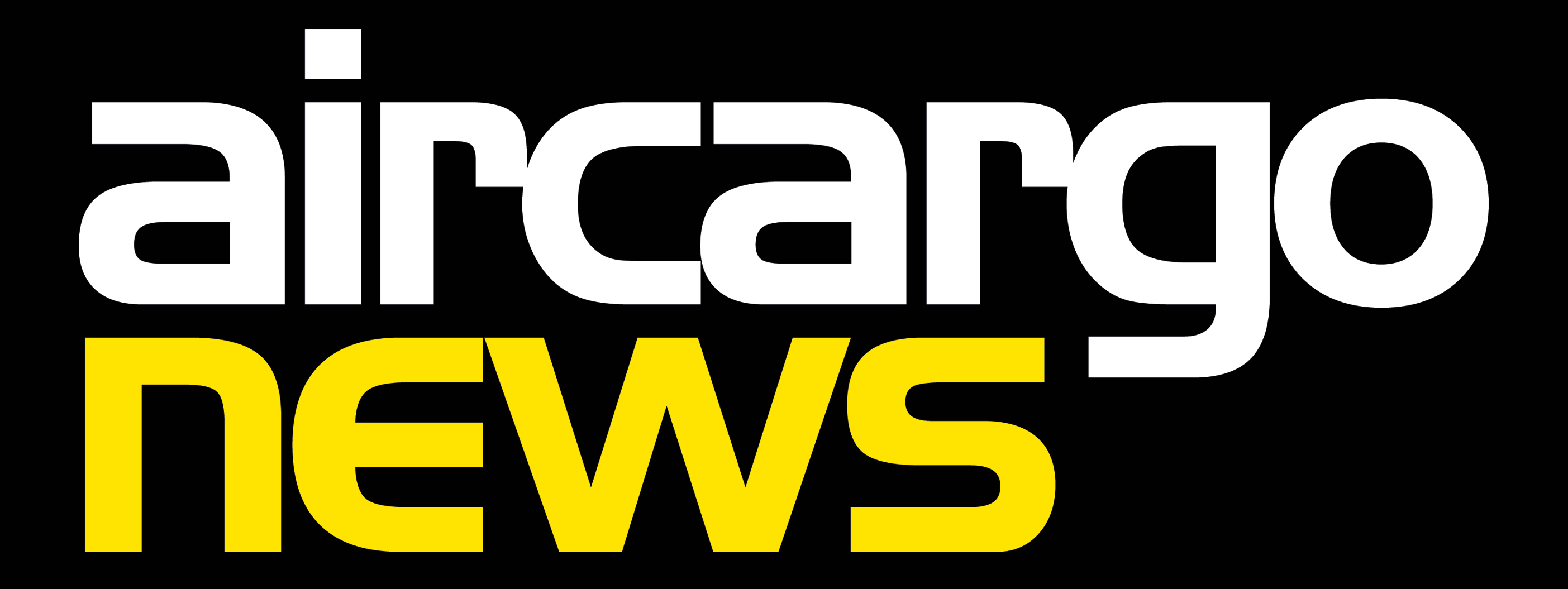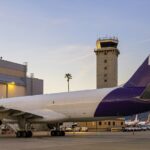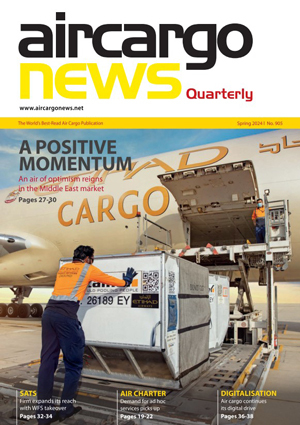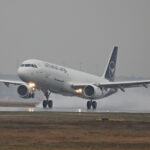Stansted: London’s freighter airport
07 / 04 / 2015
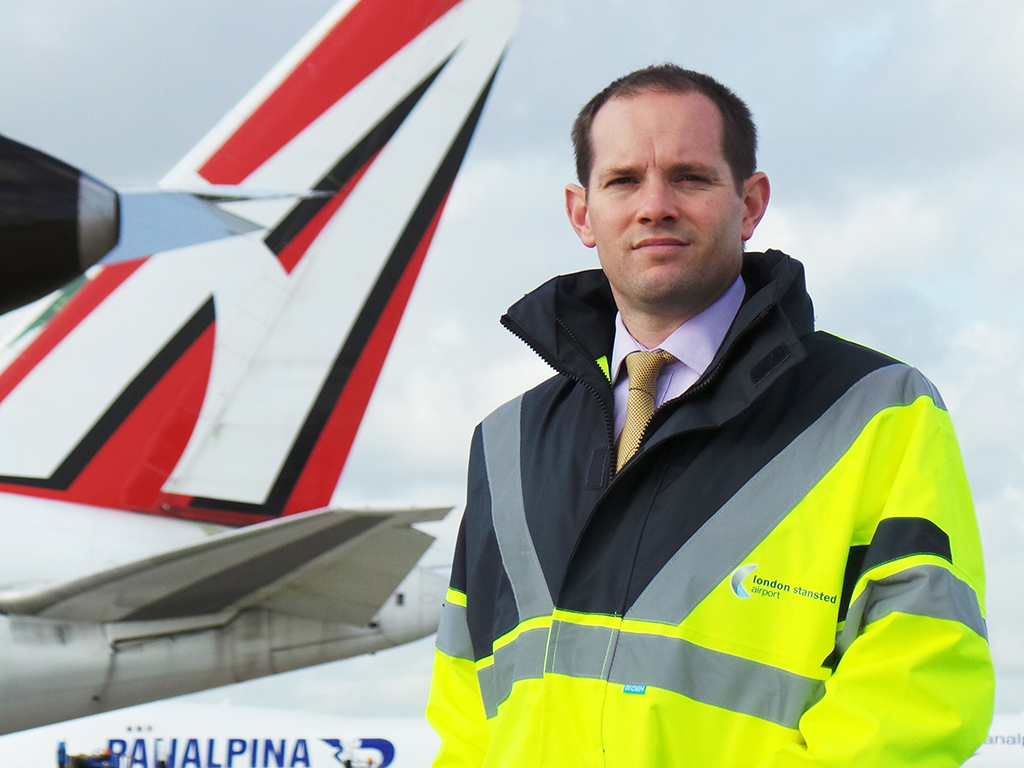
London and freighters do not often appear in the same sentence. Heathrow no longer has any slots to spare for all-cargo flights and the UK economy is not known as a powerhouse of manufacturing exports (though the country in fact gets as much of its GDP from manufacturing as France does).
Meanwhile Gatwick, London’s second airport, has only a third of the cargo throughput it had in 2000 when it was used by all the American carriers who could not get access to Heathrow.
At that time, Gatwick moved 318,905 tonnes: in 2014 the figure was 88,737 tonnes. That is little changed since December 2009 when the airport was acquired from Heathrow operator BAA by Global Infrastructure Partners.
But London does have a freighter airport and on a Monday night in mid-January it had a row of freighters on its ramp that would not have disgraced one of its continental rivals – two Cargolux B747-8Fs, a Martinair MD-11F and a B767-300 of ABX Air.
The airport is Stansted, London’s third, and its cargo tonnage is on the rise, growing 6.9 per cent in 2014 to 226,384 tonnes and up 11 per cent since 2011. As well as Cargolux and Martinair, cargo carriers using it include Asiana, Etihad, Qatar Airways, Panalpina, Silk Way and ANA Aviation.
Like Gatwick, Stansted recently changed owner, after BAA was forced to sell it by the UK’s Competition Commission (now the Competition & Markets Authority).
The purchaser was Manchester Airports Group (MAG), which owns not just Manchester but also East Midlands Airport, whose integrator traffic makes it the UK’s second largest cargo airport (and largest freighter hub) with 308,935 tonnes in 2014.
MAG took over Stansted in March 2013 and it has been busy trying to make the most of its cargo potential: Graeme Ferguson, MAG’s commercial director cargo and general aviation, spoke to Air Cargo News just after a trip to the US and before jetting off to South Africa.
It has already chalked up some successes, winning Cargolux a year ago. The Luxembourg carrier uses the airport for some transatlantic charters but its four or five B747-8F or -400F flights a week are focused mainly on perishables from Nairobi in Kenya.
A similar number of flights from the same origin are also mounted by airline management company ANA in conjunction with Kenya’s Astral Aviation, using an Atlas B747-400F and an MD-11F from Nordic Global.
Winning this traffic has partly been the result of the closure of Manston airport to the south east of London in May 2014. This used to offer a speedy transfer from airplane to truck that was particularly favoured by perishable importers.
Ferguson says that Stansted can match this, and the airport’s geographical situation means that perishables can then be moved quickly to supermarket distribution centres. “UK law says the cargo must go through the warehouse so that it can be inspected, but Swissport, who do most of the cargo handling, ensure it goes straight through and onto the truck,” he says.
Stansted also has a perishables business of longer standing, with Martinair having flown South American produce into the airport for over a decade and Panalpina moving produce from Mexico (plus other US and Mexican cargo) in its leased Atlas B747-8F for the past five years.
Panalpina now operates twice a week and Martinair has added a fourth weekly MD-11F flight, starting in Lima.
The latter service must be under question since Air France-KLM announced that it will dispose of the Martinair MD-11Fs, but Ferguson says he has yet to receive any notification to that effect. “We obviously don’t want to lose them because they are such a longstanding customer,” he says.
One long-term customer that did disappear in May last year was IAG Cargo – British Airways in other words – whose B747-8Fs were returned to Atlas. But the flights were replaced by five weekly B777F services from Etihad, and Qatar Airways also has a similar number of B777F flights.
Add in Asiana, which has two B747-400Fs per week, and Silk Way, which uses B747-8Fs, -400Fs or 767-300Fs once or twice a week depending on demand, and Ferguson is not over-worried by the trend towards using fewer freighters.
“With the oil price down, the cost of operating MD-11Fs is much lower than it was, so operators are telling us there may be delays in retiring them,” he says. “Meanwhile you have carriers such as Etihad, Emirates, Qatar and Korean expanding their fleets. So while we have seen a lot of consolidation in freighter operations, we think carriers that remain will get stronger.”
And there are always the integrators. East Midlands is the real powerhouse here, being the UK hub for UPS, TNT and Royal Mail, and one of DHL’s European sub-hubs.
As well as feeder flights, both UPS and TNT have transatlantic flights from the airport.
But Stansted does not lose out entirely. It is UK hub for FedEx, a status that sees a wide range of aircraft, from Embraer 120s to long haul MD-11Fs and 777Fs, calling at the airport. UPS also operates transatlantic flights with 767-300Fs, while the ABX Air 767F (soon to be replaced by a similar aircraft from West Atlantic) operates for TNT to its hub in Liège.
Ferguson is hopeful of developing traffic in all these areas and is also looking for new sources of business. One area of particular interest is pharmaceuticals, with the UK’s biotech cluster of Cambridge just up the motorway.
Stansted certainly has a huge advantage when attracting freighter operators, in that it can offer practically any slot that they want, day or night. A UK government commission in 2003 gave the airport permission to add a second runway, but the plan was later withdrawn and the current owners are not pushing for runway expansion.
One reason is that the airport’s single runway is only 50 per cent full, which MAG reckons gives it enough room to grow for the next 15-20 years. There are some night time noise restrictions from 11pm to 6am, with operations during these hours not allowed to exceed a cumulative total, but Ferguson says that for modern freighters that is not an issue: “We currently have around 100,000 slots a year free and we still have capacity for night freighter flights,” he says.
On the passenger side the airport is home to around a dozen low cost carriers, none of which carry cargo. What bellyhold cargo there is comes on Turkish carrier Pegasus.
Things used to be different. In the past, both American Airlines and Continental Airlines tried to operate transatlantic passenger services into Stansted but they never lasted long. The same was true of two business class only carriers – MAXjet and Eos – which operated to Washington and New York out of Stansted from 2005 onwards, only to fold when the global financial crisis struck.
AirAsia X also flew from Kuala Lumpur to Stansted for two and a half years, before defecting to Gatwick in October 2011. All of these services carried cargo.
Ferguson is hopeful that with Heathrow and Gatwick crowded, long haul services will return, however. He points to the example of holiday operator Thomas Cook, which carries cargo into Manchester on flights from destinations such as Las Vegas, Cancun and Miami.
“We are hopeful they might do this in Stansted too,” he says. “In the longer term we hope to bring long haul cargo back, for example with US or Gulf carriers. We certainly have the capacity to do more bellyhold.” ■
